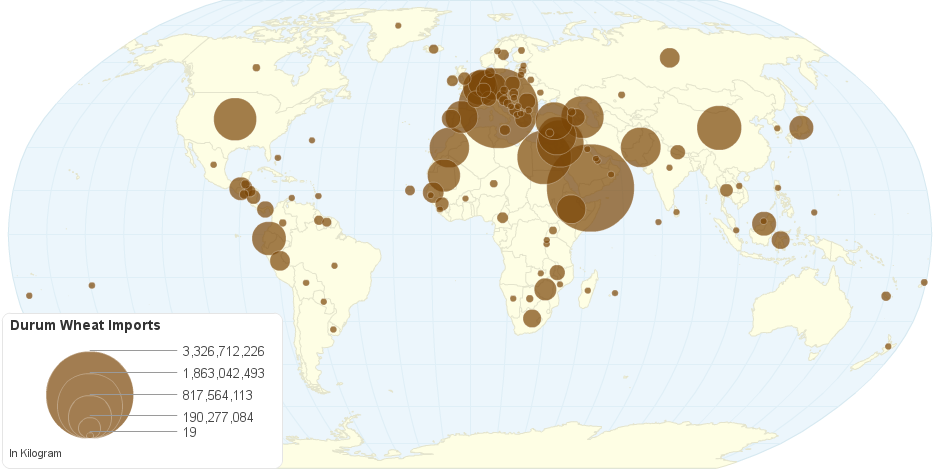This Chart Shows Durum Wheat Imports by Country
Durum wheat is the only tetraploid species of wheat of commercial importance that is widely cultivated today.[5] It was developed by artificial selection of the domesticated emmer wheat strains formerly grown in Central Europe and the Near East around 7000 BC, which developed a naked, free-threshing form. Like emmer, durum wheat is awned.
Durum in Latin means "hard", and the species is the hardest of all wheats. Its high protein content, as well as its strength, make durum good for special uses, the most well-known being pasta. Durum wheat is used extensively in breadmaking. However, it is unusual in that, despite very high protein content, it is low in desirable gluten needed to form a glutinous web necessary for bread to rise.
As a result, although 100 percent durum wheat breads do exist in most instances bread doughs contain only a portion of durum wheat and are supplemented substantially with commercial white flours, often those higher in gluten necessary to offset the poor gluten contribution of durum flour. When durum flour is used as the sole flour in bread, substantial additions of isolated wheat gluten are necessary for rising to occur. Without it, 100 percent durum wheat breads are often heavy, with very close grain, and will split easily when risen for baking.
10 years ago

